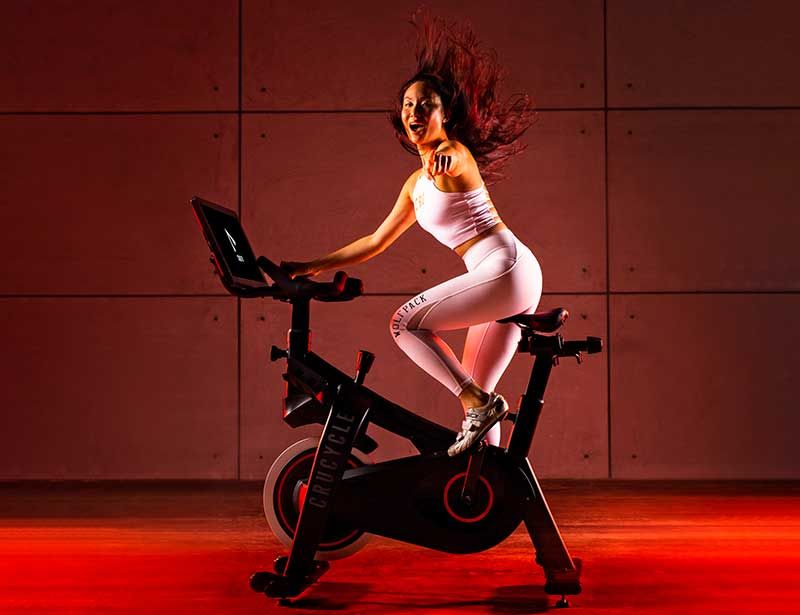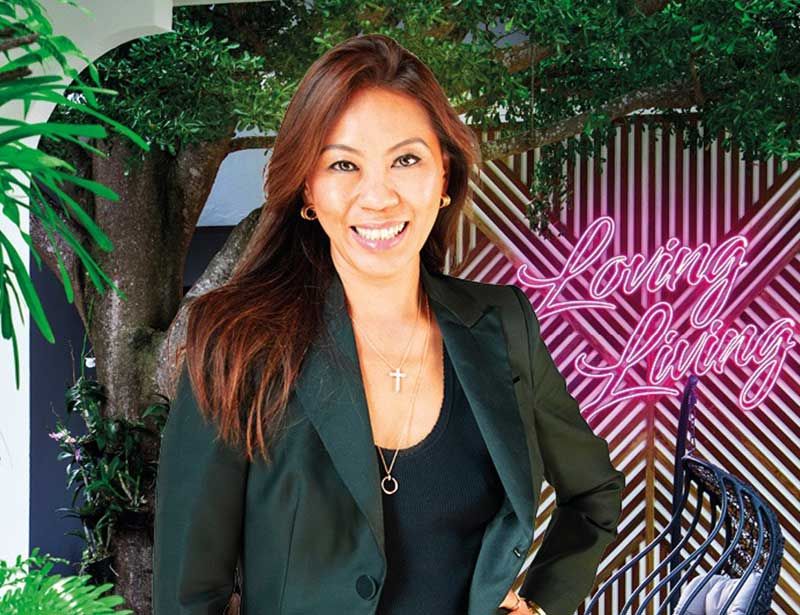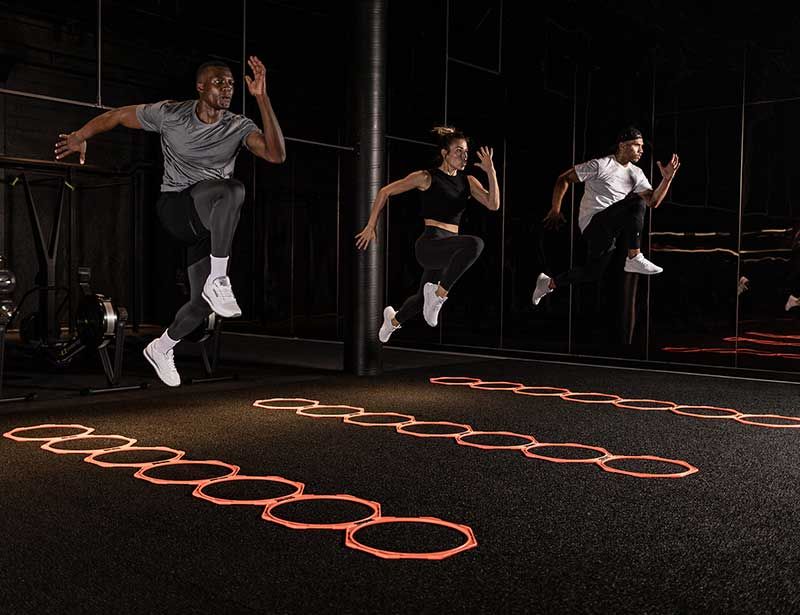Asia-Pacific
Setting the world on fire

Let’s start with a bit of background.
Founded in 2015 by Dave Nuku and Rich Hutson – and with Nuku’s wife and industry veteran Tracy Minnoch-Nuku at that point “advising from the kitchen table” (her words) before officially joining the business six months later – the innovative, community-focused FIRE Fitness soon made its presence felt in its home city of Kuala Lumpur, Malaysia.
Offering proprietary class experiences RIDE, STRIKE, STRIDE, FORCE – and more recently REVOLUTION and BARRE – all created by the in-house team, FIRE quickly established a leadership position in the Malaysian boutique segment.
Let’s now fast-forward to November 2019 when FIRE Fitness, by this point operating two sites, was acquired by multi-brand parent group Evolution Wellness, under the leadership of CEO Simon Flint. In the process, FIRE joined an impressive brand line-up that already included Fitness First Asia, Celebrity Fitness, mid-market club chain CHi Fitness, wellness retreat business Fivelements and no-frills gym brand GoFit.
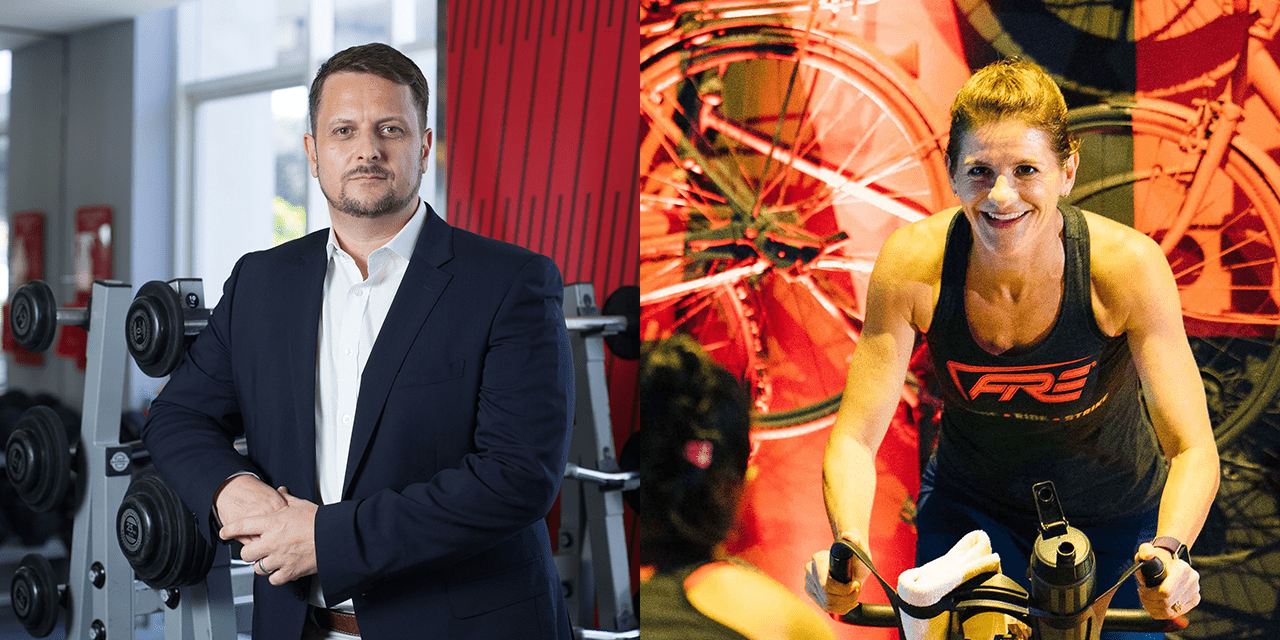
“A key mantra for FIRE was ‘Set the world on fire’, but running the business on our own meant we were limited in our ability to achieve that,” explains Minnoch-Nuku. “We wanted to work with a business that would help us go global.”
And Evolution Wellness’ belief in, and intentions for, the FIRE brand were clear from the outset: FIRE Station 3 opened just six weeks after the acquisition, with the flagship FIRE Station 4 – offering three distinct studios under one roof – opening in early 2020, just before COVID sent the sector into lockdown.
Here, we speak to Evolution Wellness CEO Simon Flint (SF) and FIRE’s head of programming Tracy Minnoch-Nuku (TMN) about the FIRE story so far, the buoyancy of its indoor cycling concept in these post-lockdown days, and their plans to take the FIRE brand global.
What did you set out to create with FIRE?
TMN: Dave and I had a lot of conversations at the very beginning around “the way it could be”: what the signature programmes might look like, how the trainers should deliver the workouts, the culture, the branding, how to package all of this within a boutique format.
Dave had never been to the other big boutiques around the world: SoulCycle, Barry’s and so on. His concepts were 100 per cent original, born from self-study and his own passion for small group training, personal training and instructing group exercise himself. He already knew how to create a rock concert environment in a studio.
The class concepts we’ve developed at FIRE are kick-ass small group training programmes that change lives. We talk a lot about ‘living a life on fire’, which is about empowering people to be the best they can be.

the way i describe it, if soulcycle and rpm were to have a baby, it would be Ride!
We place a big focus on our trainers, too, going far beyond simply ensuring they’re rockstars who are able to bring their A-game to every class. We also provide them with training in social media, community-building, how to make people feel connected even before they’ve been to the club. That sense of connection and community is central to the FIRE concept. We aim to ensure every class participant genuinely feels part of the experience – not just watching and following the instructor but, in a small group environment, actually being part of it, with lots of personal interaction.
What’s your signature style when it comes to indoor cycling?
TMN: Our RIDE classes are small group cycling: we typically have 16 bikes in a studio, with plenty of space around them for floor work in our fusion classes.
Rhythm cycling – that dancified style of cycling – is very popular in Asia, but thus far we’re steered clear of rapid tap-backs and too much hands-off stuff. Our classes are definitely rhythmic, set to the beat of the music, but the terrain brings together sprints, climbs, fast twitch and slow twitch to keep it interesting.
The way I describe it, if SoulCycle and RPM were to have a baby, it would be RIDE! You get the safety, the exercise science and the promise of results through our terrain, then you get the fun, the disco lights and the banging tracks as well. Layered on top of all of that, we empower each instructor to bring their personality to the class.
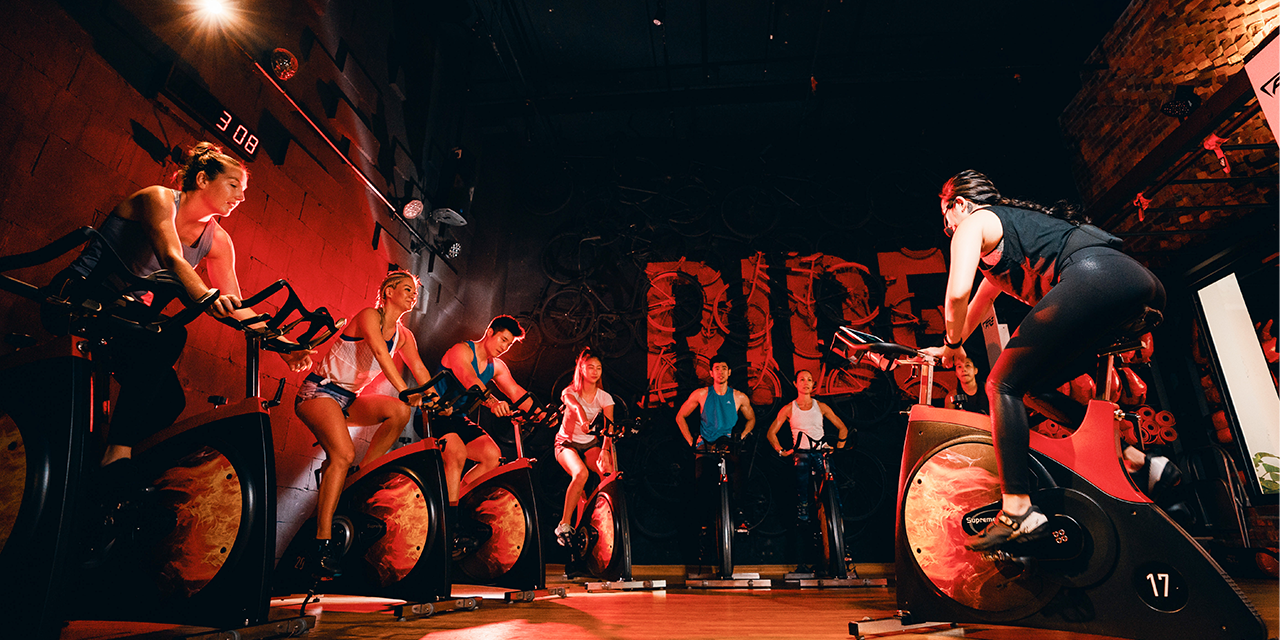
You offer a lot of fusion classes too – why?
TMN: People have so little time these days; we felt it would be good to offer cardio, strength and flexibility all in the space of 45 minutes. We aren’t unique in doing this at a global level, but it is still unique in Malaysia.
We offer RIDE HIIT and RIDE YOGA, and really this has been driven by what we personally would want to do. I have a BODY BIKE at home, which is great, but I find I want to jump off after a while to do something else. So, our fusion classes bring together just 30 minutes of cycling followed by 15 minutes of HIIT or yoga.
We’re finding RIDE YOGA is bringing in people who don’t normally “do” yoga, too. It’s only 15 minutes of yoga, plus we feature some of the simpler moves and we don’t make it too spiritual. Some of the men doing the class tell me it’s their only yoga for the week, but the stretching means they aren’t sore the next day, so they’re ready to train again. They’re also reporting fewer injuries.
How is RIDE performing since COVID?
TMN: Our timetable offers the same number of RIDE classes as our other programmes, but if anything, RIDE is slightly outperforming the other disciplines at the moment. That’s because, even with the current social distancing, we’re able to offer more spaces in RIDE.
As I mentioned just now, RIDE is small group cycling in a huge studio, so there’s plenty of room to space the bikes out: we’ve only had to lose two bikes, meaning we still have 14 spots in every class. RIDE class formats also lend themselves to distancing: it’s easy to keep people safe on a bike, or in their own marked-out space on the floor in our fusion classes. All we’ve had to do is tweak the programming slightly.
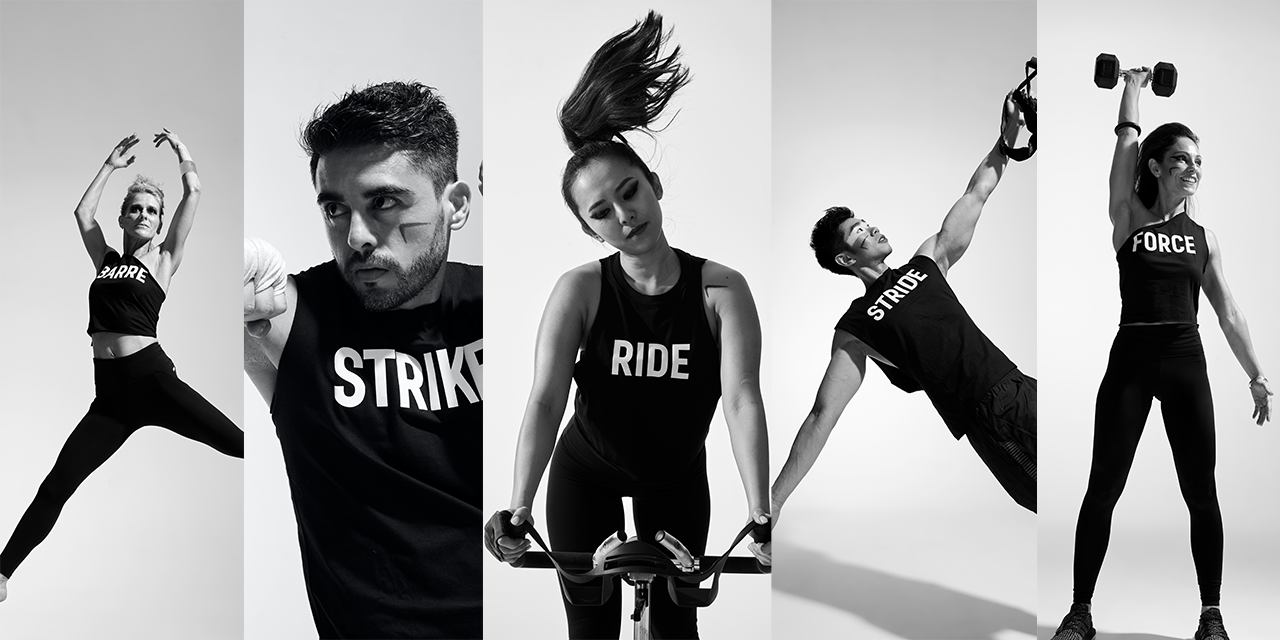
Any plans to further evolve your RIDE classes?
TMN: My personal philosophy is that you have to keep things moving on at least every six months. Our members are turning up, they’re getting results – we know we have a pretty good formula. But I’m constantly asking myself ‘could it be even better?’ Is there something more we could be doing to service our members? That’s the case across all our class modalities and studios, not just RIDE.
Looking at cycling specifically, though, we’re already up to RIDE 4.0, with enhancements over the years including more interaction, more team orientation, adjustments to the terrain, the addition of a more fun track. It’s still a 30-minute workout on the bike, but we continue to make little tweaks to the way we coach it.
Does FIRE offer at-home classes?
SF: During lockdown, to retain members, we offered a lot of online classes for free: Thailand recently ran its 1,000th online class and they’ve only been going since March. It’s mostly been Fitness First and Celebrity Fitness content so far, but we experimented with adding FIRE content and it was very popular.
The strategy now is this: for Fitness First and Celebrity Fitness, a low-cost, high-volume online model. Charging a nominal monthly fee of around US$6, you get on-demand access to our signature classes and a number of popular licensed classes.
Meanwhile, FIRE’s online model is a premium one. Launched in November, we charge per class and in return, you get a two-way experience with no more than 20 participants in each class and lots of personal interaction and feedback.
You’re now licensing FIRE Fitness. What work has underpinned this?
SF: We have no restrictions in terms of where we can take the FIRE Fitness brand, so we absolutely plan to go global with it.
At FIRE Station 4, we set out to prove the concept in a bigger model with more modules and it’s worked well. We’ve also explored class sizes to optimise unit economics, but without ever pushing things to the point of losing the small community feel.
We have no restrictions in terms of where we can take fire. we absolutely plan to go global.
But absolutely key has been the work we’ve done in bottling the essence of FIRE, then codifying it. We’ve spent a lot of time asking ‘what are the things we do every day that make us FIRE?’ It’s the values: work hard, play hard, for example. It’s the community vibe, the intimacy of the classes, the skillsets trainers need before they’re signed off to go live… These are the kind of things that matter when we scale, because they have to be done passionately and consistently.
This work will now allow us to scale hard and fast across borders without diluting the FIRE perfume to a point where you can’t smell it any more.

What’s on offer to potential licensees?
SF: We’ve developed an exceptional proposition for licensees, flexible in terms of the product offering, the footprint, the CapEx requirements. You can opt to build a single-studio or multi-studio FIRE Station, selecting from all the signature FIRE programmes to suit the demographics of your area. We’re also finalising a FIRE PT studio concept to help licensees optimise revenues.
we launch a new digital class every week for each fire programme, supporting our talent as we scale
This flexibility means it doesn’t have to be a capital city concept. In fact, particularly given the dramatic change in working patterns since COVID, I imagine quite a lot of our licensed sites will be suburban.
We wanted to ensure we had a competitive offer to appeal to as many prospective licensees as possible. The investment required therefore starts at just US$75,000, increasing from there based on the number of studios in your club: a premium, three-studio FIRE Station could cost up to US$350,000, for example, and upwards from there for additional studios. But if you want to start with a great product at a lower CapEx, you can economically launch a single-modality REVOLUTION studio – our signature HIIT circuit studio, launched at the end of 2019 and now offering heart rate monitoring as standard.
We also offer an extensive support package: a hugely supportive onboarding process for licensees, talent training through our tech platform, brand and marketing support and so on.
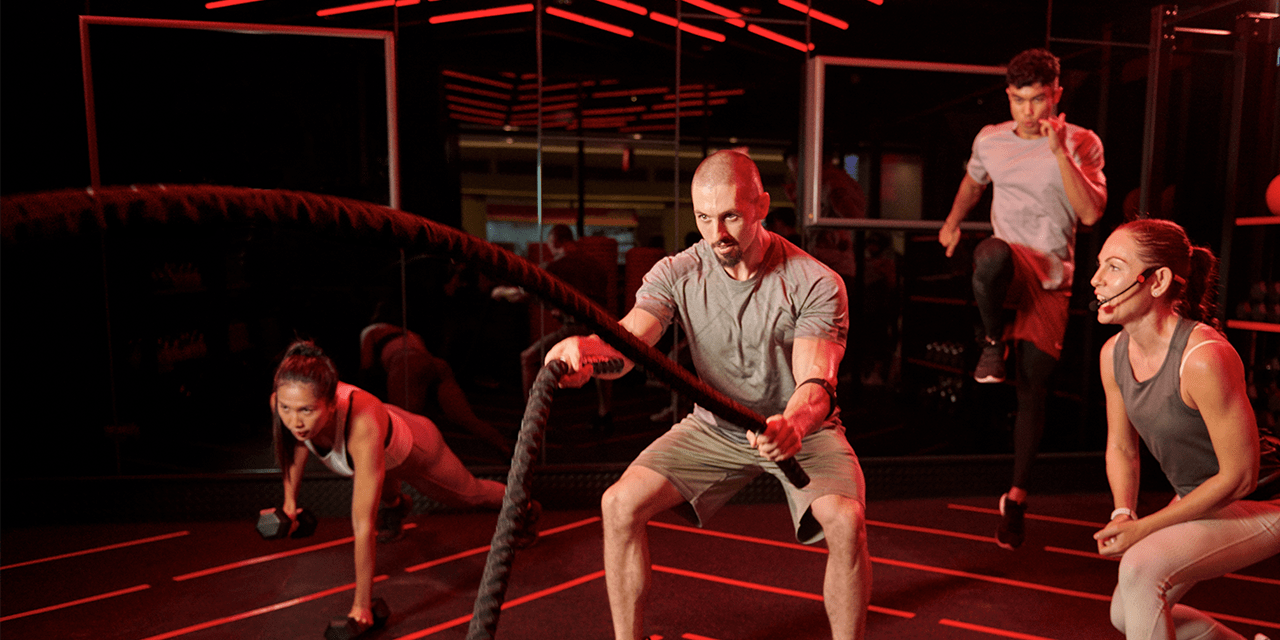
Tell us more about your tech platform.
SF: When building FIRE Station 4, we developed a proprietary tech platform for content hosting, facilitating trainers’ ability to build their classes using our extensive library. Initially used in REVOLUTION and now rolled out across all our FIRE programmes, the digital format allows members to follow the lead of an on-screen rockstar on TVs around the studio. All of this complements the efforts of our live, in-person trainers.
We knew a tech platform would be a must-have tool to enable rapid scaling of the FIRE brand, both for consistency of the class experience and for instructor training: instructors can learn how to deliver the classes by studying the online content.
TMN: We launch a new digital class every week for each signature FIRE programme. You don’t have to use this content: if you have a rockstar instructor who doesn’t need it, all our classes can be run without the TV screens. But having the digitised content is a great way of supporting our talent as we scale.
I would never have predicted that digitising the classes would work, but it does, even for dance programmes like BARRE. Participants can see what to do even when they can’t see the instructor properly; coming soon, a split screen will give them a heads-up on the next movement or exercise too. Meanwhile, it takes the pressure off trainers from a choreography perspective. I developed FIRE’s BARRE programme, but even I now prefer to teach my classes with the digital class running on-screen. It means I don’t have to make up a whole new class myself every time.
The trainer can choose any class they like from the library, which of course will only grow over time, and they also use their own playlists which adds to the sense of a different class each time.

How will you quality-control as FIRE grows?
SF: Our contract with licensees makes it clear that we will carry out virtual audits: watching classes remotely, watching trainers being signed off, doing facility walk-throughs. We have high standards that must be met.
But at the same time, ours is a ‘freedom within a framework’ approach. Licensees can add to the offering provided it doesn’t detract from the core product. For example, we’re just signing an agreement with a partner in the Middle East who wants to launch a five-studio club, including a PT studio, and has asked if they can also have a juice bar and a prayer room. We’re fine with that. There will always be nuances in local markets and you have to flex around these to get the best out of the sites.
There’s also an option for local rockstars to become strategic partners for FIRE, creating their own content which, having met our standards, is then shared via our tech platform. We’re very open to this, not least because it will give us content in a number of different languages.
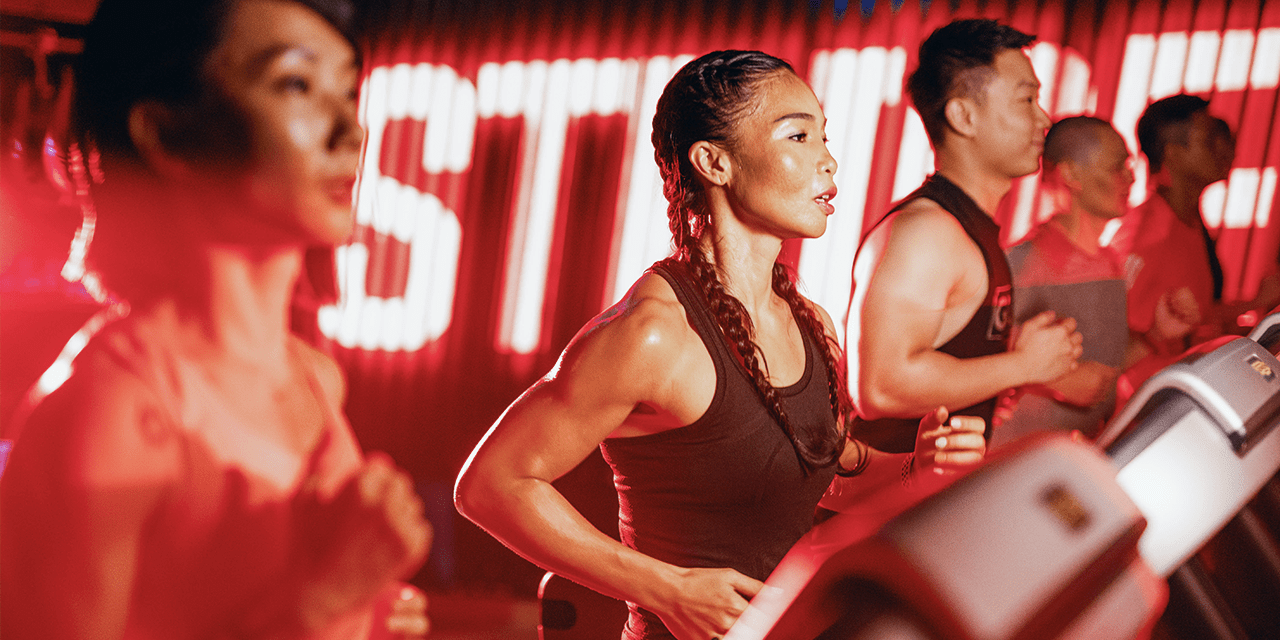
What are your growth plans?
SF: In the markets in which we already operate – Hong Kong, Indonesia, Malaysia, Philippines, Singapore and Thailand – we will prioritise running our own FIRE locations. However, COVID has led us to take on a slightly different outlook now: if we find good strategic partners, we may be open to a network approach, isolating specific territories for licensees so we don’t overlap.
Beyond that, there’s certainly scope to do hundreds of clubs worldwide. At this stage, though, I’m not putting specific numbers or a timeframe on it. Coming out of COVID, it’s really going to be down to the economy – how much money people have to invest – and real estate. If I were a landlord, I would be cutting deals now rather than waiting for the market to recover and having empty properties for potentially months or even years. However, we’ll have to see what happens.
In the long run, though, we’re finding consumers are already spending more on their health, so we have a good deal of optimism around both of our licensed products: FIRE and GoFit.

Conceived, powered and funded by BODY BIKE®, RIDE HIGH has a simple mission: to celebrate and champion the very best of indoor cycling, sharing ideas, stories and experiences from around the world to inspire the sector on to even bigger and better things. Subscribe for free by leaving your details below and we'll send indoor cycling's hottest news direct to your inbox three times a year.


